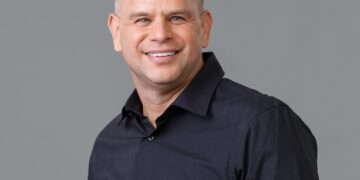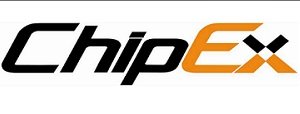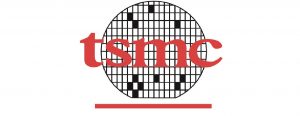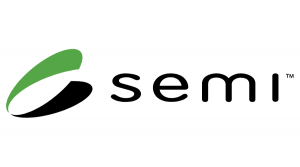X-Ray Imaging Applications to Benefit From Development of Wafer-Scale CMOS Imaging Technology
-
Advanced sensor for medical imaging applications developed by the Science and Technology Facilities Council’s Rutherford Appleton Laboratory
-
Highly innovative imager enabled by advanced analog design tools from Tanner EDA and leading-edge CMOS Image Sensor manufacturing process technology from TowerJazz
-
Innovative three-sided ‘buttable’ high-resolution high-frame-rate sensor integrates 6.7 million pixels on 50-micron pitch for mammography applications
HARWELL, England–(BUSINESS WIRE)–A highly innovative high-resolution wafer-scale digital image sensor that targets medical imaging applications has been developed at the Science and Technology Facilities Council’s (STFC) Rutherford Appleton Laboratory (RAL). One of the key aspects in the development of this CMOS imaging sensor by the STFC’s CMOS Sensor Design Group, was the use of advanced analog tools from Tanner EDA, a leading provider of tools for the design, layout and verification of analog and mixed-signal integrated circuits (ICs). Measuring 120 x 145 mm and effectively using an entire 200 mm silicon wafer in its production, the new image sensor is being manufactured by TowerJazz, a leading global specialty semiconductor foundry, using its cutting edge and high yield specialty CMOS sensor process technology.
“The STFC works closely with its partners, such as Tanner EDA and TowerJazz, to develop innovative solutions that meet highly demanding requirements in a range of scientific and industrial applications”
X-Ray Imaging Applications
The primary target application for the new sensor is X-ray medical imaging and more specifically mammography and digital tomosynthesis, the advanced diagnostic technique used to generate 3D representations of patients or other scanned objects. There is increasing interest in the use of solid-state-based X-ray detection systems in the replacement of conventional diagnostic imaging techniques. One of these technologies is CMOS sensor based imaging, which can bring key advantages in terms of performance such as high resolution, high dynamic range and low noise capabilities. In addition, it can offer significant system cost advantages for X-ray imaging applications, although it can come with an initial penalty in terms of design complexity in the actual development of the CMOS sensor.
As no lens is used in CMOS-imaging-based X-ray applications, the size of an image sensor has to match the size of the target area. While in some medical imaging applications such as extra-oral panoramic dental imaging, a sensor measuring 139 x 120 mm is usually adequate. However, this does not suffice for most medical applications. For example, mammography applications require a sensor that is approximately 290 x 240 mm in size, and even larger for chest radiography. In other applications such as full body scanning for security purposes, an even more extensive sensor area can be necessary.
Innovative Three-Sided ‘Buttable’ Sensor Design
The new STFC high-resolution and radiation-hard CMOS sensor has been developed to meet these challenges. A unique feature of the device is that it has sensing pixels right up to the edges on three sides of the imager. This allows multiple sensors, manufactured on cost-effective 200 mm silicon wafers, to be ‘butted’ or ‘tiled’ together in a 2 x 2 arrangement to form a significantly larger imaging area and to meet the requirements for mammography applications. Additionally, any 2 x N sensor arrangements are possible, thus making the device ideal for applications that demand even larger area coverage, such as chest imaging or security scans.
Traditionally CMOS imagers have the required electronic circuitry implemented on two sides of an imaging array to address the individual sensor pixels. To achieve this three-side ‘buttable’ design, the STFC CMOS Sensor Design Group developed some innovative electronic circuitry IP (Intellectual Property) to implement the necessary pixel readout and row-addressing driver functions on just one edge of each sensor, with extra circuitry embedded in the actual pixel array, while maintaining a high degree of image quality.
The full-custom-design sensor, which offers a focal plane of 139.2 x 120 mm, has 6.7-million (2800 x 2400) pixels on a 50-micron pitch, 32 analog outputs and also features low noise, a high dynamic range and a programmable region-of-interest readout. Each pixel is constructed from a basic three-transistor (3T) base with a low-noise partially pinned photodiode, offering ‘charge-binning’ capability to deliver its high signal-to-noise characteristics. This means the sensor can offer a very high frame rate of 40 fps (frames per second) at full resolution and ‘binned’ images can be read at an increasingly faster rate. The high frame rate makes the sensor ideal for applications that demand fast acquisition of multiple images such as in digital tomosynthesis, which is receiving increasing interest in the medical field.
Analog Design and Manufacturing Process
The STFC CMOS Sensor Design Group worked with Tanner EDA and its exclusive representative in Europe, EDA Solutions, to use the Tanner tools to develop the innovative pixel-addressing IP, which was almost entirely analog circuitry with only a small amount of on-chip digital logic. Specifically, the STFC design group used Tanner Tools Pro, in conjunction with Tanner’s HiPer Verify tool. Tanner Tools Pro is a comprehensive software suite for the design, layout and verification of analog, mixed-signal, RF and MEMS ICs. The tool suite comprises fully integrated front-end and back-end tools including schematic capture, circuit simulation, waveform probing, physical layout and verification. Tanner’s HiPer Verify is a comprehensive and affordable solution for analog and mixed-signal IC design rule checking (DRC) and hierarchical netlist extraction.
The STFC design group also worked closely with TowerJazz for the manufacture of the sensor, which is implemented in a 180/350-nanometer dual-gate CMOS Image Sensor (CIS) process technology on 200 mm wafers. TowerJazz’s CIS technology process enables the customization of pixels, according to project needs for many digital imaging applications, offering excellent dark current, low noise and dynamic range performance characteristics.
“The STFC works closely with its partners, such as Tanner EDA and TowerJazz, to develop innovative solutions that meet highly demanding requirements in a range of scientific and industrial applications,” said Dr. Renato Turchetta, CMOS Sensor Design Group Leader at the Science and Technology Facilities Council’s Rutherford Appleton Laboratory. “The complete set of Tanner EDA tools was extremely well suited for the design of this sensor with its complex analog architecture. This, in conjunction with the high yield of the TowerJazz CMOS Image Sensor process technology, was instrumental in achieving a first-right-time design with no prerequisite for any initial prototype design.”
About the Science and Technology Facilities Council (STFC)
The Science and Technology Facilities Council is keeping the UK at the forefront of international science and tackling some of the most significant challenges facing society such as meeting our future energy needs, monitoring and understanding climate change, and global security.
The Council has a broad science portfolio and works with the academic and industrial communities to share its expertise in materials science, space and ground-based astronomy technologies, laser science, microelectronics, wafer scale manufacturing, particle and nuclear physics, alternative energy production, radio communications and radar.
STFC operates or hosts world class experimental facilities including:
-
in the UK; ISIS pulsed neutron source, the Central Laser Facility, and LOFAR. STFC is also the majority shareholder in Diamond Light Source Ltd.
-
overseas; telescopes on La Palma and Hawaii
It enables UK researchers to access leading international science facilities by funding membership of international bodies including European Laboratory for Particle Physics (CERN), the Institut Laue Langevin (ILL), European Synchrotron Radiation Facility (ESRF) and the European Southern Observatory (ESO).
STFC also has an extensive public outreach and engagement programme. It is using its world leading research to inspire and enthuse schools and the general public about the impact and benefits that science can have on society.
STFC is one of seven publicly-funded research councils. It is an independent, non-departmental public body of the Department for Business, Innovation and Skills (BIS).
Follow us on Twitter @STFC_Matters
Further information is available at
About Tanner EDA
Tanner EDA provides a complete line of software solutions that catalyze innovation for the design, layout and verification of analog and mixed-signal (A/MS) integrated circuits (ICs) and MEMS. Customers are creating breakthrough applications in areas such as power management, displays and imaging, automotive, consumer electronics, life sciences, and RF devices. A low learning curve, high interoperability, and a powerful user interface improve design team productivity and enable a low total cost of ownership (TCO). Capability and performance are matched by low support requirements and high support capability as well as an ecosystem of partners that bring advanced capabilities to A/MS designs.
Founded in 1988, Tanner EDA solutions deliver just the right mixture of features, functionality and usability. The company has shipped over 33,000 licenses of its software to more than 5,000 customers in 67 countries. Further information is available at
In Europe, Tanner EDA is exclusively represented by EDA Solutions, based in Fareham, UK. Further information is available at
About TowerJazz
Tower Semiconductor Ltd. (NASDAQ: TSEM, TASE: TSEM), its fully owned U.S. subsidiary Jazz Semiconductor Ltd., and its fully owned Japanese subsidiary TowerJazz Japan, Ltd., operate collectively under the brand name TowerJazz, the global specialty foundry leader. TowerJazz manufactures integrated circuits with geometries ranging from 1.0 to 0.13- micron, offering a broad range of customizable process technologies including: SiGe, BiCMOS, Mixed-Signal and RFCMOS, CMOS Image Sensor, Power Management (BCD), and Non-Volatile Memory (NVM) as well as CMOS and MEMS capabilities. TowerJazz also offers a world-class design enablement platform that complements its sophisticated technology and enables a quick and accurate design cycle. In addition, TowerJazz provides (TOPS) Technology Optimization Process Services to IDMs as well as fabless companies that need to expand capacity, or progress from an R&D line to a production line. To provide multi-fab sourcing, TowerJazz maintains two manufacturing facilities in Israel, one in the U.S., and one in Japan with additional capacity available in China through manufacturing partnerships. For more information, please visit
Contacts
Science and Technology Facilities Council (STFC)
Media Contact
Lucy Stone
lucy.stone@stfc.ac.uk
or
TowerJazz
Company/Media Contact:
Lauri Julian, +1-949-435-8181
lauri.julian@towerjazz.com
Investor Relations Contact:
Levi Noit, +972 4 604 7066
noit.levi@towerjazz.com
or
Tanner EDA
Media Contact
Cayenne Communication
Linda Marchant, +1-919-451-0776
linda.marchant@cayennecom.com
or
EDA Solutions
Media Contact
Publitek Ltd.
Richard Stockdill, +44 1225 470000
richard.stockdill@publitek.com




























